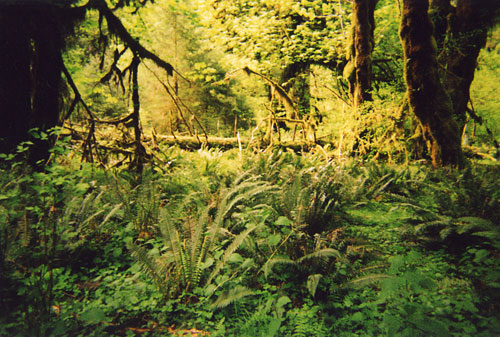User Login |
Forest Understory AHabitat Component - EmergentEmergentThe tallest trees towering more then 200 feet above the canopy, scattered throughout the forest are emergents. These trees are the highest layer in the forest. Animals found in this layer include high flying birds.
Emergent: Photo Credit: http://dinets.travel.ru/canopycrane.jpg
categories [ Forest Understory A ]
read more
Habitat Component - CanopyForest CanopyAbove the understory is the canopy. Here the treetops have densely packed leaves that form a 'green blanket' above the low lying plants. It shields out sunlight from the floor and understory making both layers very shady. Animals here include birds and tree-loving mammals.
categories [ Forest Understory A ]
read more
Habitat Component - UnderstoryForest UnderstoryImmediately above the forest floor is the understory. It consists of tree trunks, saplings, small ground plants, and vines. Animal life here consists mostly of larger insects, snakes, frogs, and small mammals. Forest Understory: Picture of Hoh Rainforest taken by Ellen Kimbro
categories [ Forest Understory A ]
Learning and Discoveries |
|
Big Leaf Maple |
Acer macrophyllum |
Site Introduction
Our Site at The Longhouse Ethnobotanical Garden
Forest Understory A
Our site is divided almost in half by a woodchip trail, most of our site lies on flat land, which slopes up slightly on the side of the trail farthest from the longhouse. On the farther side grow a few maples, as well as many fir trees. The understory is almost entirely covered by ivy, which is beginning to climb up a couple of the trees. On the inner side of the trail, closest to the footpath and longhouse, the predominant plant that grows is the fern. From the start of the footpath to just past where it begins to curve is relatively barren aside from some labeled plants. After the curve in the path, the inner corner of our site (closest to the longhouse) is lush with multiple types of small, low-growing plants, some of which resemble moss. In the back corner of our site (farthest from the start of the footpath), grows a cluster of trees so close together that the roots intertwine. Underneath, the ground slopes steeply down to meet the yardwaste piles. The understory includes many low-growing bushes of sharp-leaved plants which produce purple berries.
Habitat Theme
Habitat Components of a Forest
Forest Floor
This is where all life begins. On the damp ground lies fallen leaves, fruits, decaying trees, and fungi which enrich the soil and provide nutrition for young plants to grow. Many smaller animals and insects can be found here.






